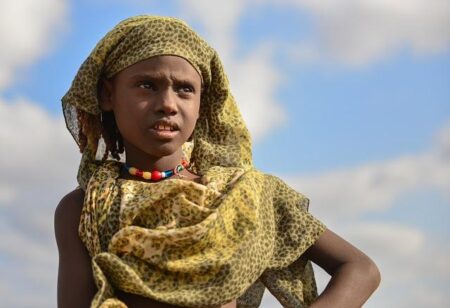Kenya, Tanzania, and Djibouti Ports Compete for Trade Supremacy Amid Rising Regional Investments
In the bustling waters of East Africa, a fierce competition is unfolding among the ports of Kenya, Tanzania, and Djibouti for dominance in regional trade. As investments flood into these strategic maritime hubs, each nation is vying to enhance its infrastructure, expand cargo capacity, and streamline operations to capture a larger share of the regional market. With the African Continental Free Trade Area (AfCFTA) on the horizon, the stakes are high for these nations, which are not only looking to improve their economic standings but also aiming to become pivotal players in the global supply chain. This race for supremacy brings both opportunities and challenges, prompting each nation to rethink its maritime strategies in a rapidly evolving economic landscape. As these ports gear up for the future, the implications for trade, logistics, and sustainability in the region are profound, influencing not just local economies but also the broader African growth narrative.
Kenya and Tanzania Ports Enhance Infrastructure to Attract Foreign Investment
In a bid to attract increased foreign investment, both Kenya and Tanzania are undertaking significant enhancements to their port infrastructures. This strategic initiative aims to bolster their competitiveness against regional rivals, particularly Djibouti, which has long been recognized for its strategic trade routes. By upgrading facilities and expanding capabilities, these nations are looking to position themselves as top choices for shipping lines and logistics operators. Key developments include:
- Expansion of Dock Facilities: Increasing capacity to accommodate larger vessels.
- Modernized Cargo Handling Systems: Implementation of advanced technology to streamline operations.
- Improved Road and Rail Connectivity: Strengthening transportation links to inland destinations.
Furthermore, both countries have initiated partnerships with private investors to finance these projects, signaling a shift towards more collaborative approaches in infrastructure development. The emphasis is not only on expanding physical space but also on enhancing the efficiency and reliability of logistic services. These efforts are crucial as they directly influence the cost and time of shipping, factors that can sway businesses’ decisions on where to invest. A comparison of the ongoing projects is highlighted in the table below:
| Port | Key Project | Completion Date |
|---|---|---|
| Kenya – Mombasa | New Container Terminal | 2024 |
| Tanzania – Dar es Salaam | Port Expansion Phase II | 2025 |
| Djibouti – Port of Djibouti | Deep Water Port Development | 2023 |
Djibouti’s Strategic Location: Key to Regional Trade Dominance
Djibouti’s geographical advantage positions it as a vital hub for maritime trade across the Horn of Africa and beyond. Nestled near the strategic Bab-el-Mandeb Strait, the country serves as a gateway for vessels navigating from the Indian Ocean to the Suez Canal, making it a focal point for shipping routes connecting Europe, Asia, and the Americas. The port infrastructures, spearheaded by significant investments, offer state-of-the-art facilities that attract greater cargo traffic, fostering a competitive edge over regional counterparts. Key features enhancing Djibouti’s appeal include:
- Proximity to key shipping lanes: Shorten transit times for global shipping.
- Free trade zones: Encourage businesses to set up operations with tax incentives.
- Multimodal transport options: Access to road, rail, and air networks boosts connectivity.
As Kenya and Tanzania ramp up their port development projects, Djibouti continues to solidify its status as the favored port for imports and exports in the region. The Djiboutian government actively promotes partnerships with international shipping lines, enhancing logistics efficiency and service delivery. This strategic orientation not only draws in investments but also cultivates a competitive environment that benefits businesses, foster regional trade integration, and ultimately boosts national economic growth. Current port statistics highlight this trend:
| Port | TEUs Handled (2022) | Investment in Infrastructure (USD) |
|---|---|---|
| Djibouti Port | 800,000 | 500 million |
| Mombasa Port (Kenya) | 1.3 million | 300 million |
| Dares Salaam Port (Tanzania) | 600,000 | 200 million |
Sustainable Practices in Port Operations: Recommendations for Future Growth
In the competitive landscape of African port operations, enhancing sustainability practices is crucial for maintaining long-term growth and environmental stewardship. It is recommended that port authorities adopt green technologies and prioritize investments in infrastructure that minimizes the carbon footprint of their operations. Essential practices include:
- Utilizing Renewable Energy Sources: Implementing solar panels and wind turbines to power port operations can substantially reduce reliance on fossil fuels.
- Increasing Energy Efficiency: Upgrading machinery and equipment to more efficient models can lower energy consumption and operational costs.
- Promoting Eco-Friendly Transportation: Encouraging the use of electric vehicles and optimizing logistics to reduce emissions during cargo handling.
To further reinforce sustainable practices, collaboration among key stakeholders, including governments and private sectors, is essential. Establishing policies that incentivize sustainable investments will promote the development of smart port technologies. Considerations for future initiatives could incorporate:
| Innovative Solutions | Benefits |
|---|---|
| Automated Cargo Handling | Reduces waiting time and labor costs while improving safety. |
| Waste Management Systems | Minimizes environmental impact through efficient waste disposal and recycling programs. |
| Smart Traffic Management | Optimizes vehicle flow and reduces congestion, enhancing air quality. |
Closing Remarks
In conclusion, the competition among the ports of Kenya, Tanzania, and Djibouti is not merely a battle for trade supremacy; it represents a pivotal moment in the economic landscape of East Africa. As regional investments surge and infrastructure development accelerates, these countries are positioning themselves as key players in global logistics and trade. The strategies each nation employs to enhance their port facilities and services will not only influence their own economic futures but also shape the regional marketplace as a whole.
The implications of this competition extend beyond mere economic metrics; they touch on broader themes of sustainability, regional cooperation, and the aspirations of millions who stand to benefit from enhanced trade routes and improved access to markets. As the stakes grow, stakeholders must navigate the complexities of development while prioritizing environmental stewardship and equitable growth.
Ultimately, how Kenya, Tanzania, and Djibouti respond to this dynamic landscape will determine not just their ports’ futures, but also their roles in the broader narrative of Africa’s economic transformation. As we move forward, it will be essential to monitor these developments, as they hold significant ramifications for trade not only in East Africa but across the entire continent.







